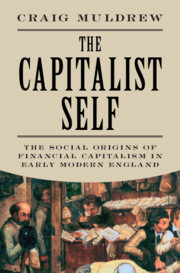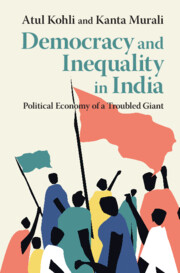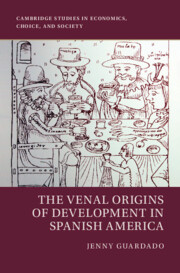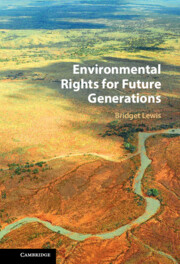Refine search
Actions for selected content:
3391648 results
Inclusive palliative care for LGBTQIA+ individuals: A socioecological perspective on barriers and enablers
-
- Journal:
- Palliative & Supportive Care / Volume 23 / 2025
- Published online by Cambridge University Press:
- 13 October 2025, e183
-
- Article
-
- You have access
- Open access
- HTML
- Export citation
Counting Work and Workers in Africa: Introduction to the Special Issue
-
- Journal:
- International Labor and Working-Class History , First View
- Published online by Cambridge University Press:
- 13 October 2025, pp. 1-10
-
- Article
-
- You have access
- Open access
- HTML
- Export citation
Large deviations for occupation and waiting times of infinite ergodic transformations
- Part of
-
- Journal:
- Ergodic Theory and Dynamical Systems , First View
- Published online by Cambridge University Press:
- 13 October 2025, pp. 1-40
-
- Article
-
- You have access
- Open access
- HTML
- Export citation
The Social Life of Wax in the Premodern Maghrib
-
- Journal:
- Comparative Studies in Society and History , First View
- Published online by Cambridge University Press:
- 13 October 2025, pp. 1-21
-
- Article
-
- You have access
- Open access
- HTML
- Export citation
Biogeographic affinities of Heterobranch sea slugs (Mollusca, Gastropoda) from the Southern Ocean
-
- Journal:
- Antarctic Science , First View
- Published online by Cambridge University Press:
- 13 October 2025, pp. 1-12
-
- Article
-
- You have access
- Open access
- HTML
- Export citation
A century of flow and surge history of Sít’ Tlein (Malaspina Glacier), Southeast Alaska – ERRATUM
-
- Journal:
- Journal of Glaciology / Volume 71 / 2025
- Published online by Cambridge University Press:
- 13 October 2025, e106
-
- Article
-
- You have access
- Open access
- HTML
- Export citation
Colonial Bureaucracy and Contemporary Citizenship: Legacies of Race and Emergency in the Former British Empire. Yael Berda (Cambridge, UK: Cambridge University Press, 2023). Pp. 278. $106.00 hardback, $34.99 paper. ISBN 9781316511664
-
- Journal:
- International Journal of Middle East Studies , First View
- Published online by Cambridge University Press:
- 13 October 2025, pp. 1-3
-
- Article
- Export citation
Numerical modelling of the 1 July 2022 flooding event, Southwest Huvadhoo Atoll, Maldives: Implications for the future
-
- Journal:
- Cambridge Prisms: Coastal Futures / Accepted manuscript
- Published online by Cambridge University Press:
- 13 October 2025, pp. 1-37
-
- Article
-
- You have access
- Open access
- Export citation
Leanne Langley, The Royal Musical Association: Creating Scholars, Advancing Research (Woodbridge: Boydell & Brewer, 2024), xxiv + 278 pp. £85.00
-
- Journal:
- Nineteenth-Century Music Review , First View
- Published online by Cambridge University Press:
- 13 October 2025, pp. 1-4
-
- Article
- Export citation
A Cnidarian affinity for Salterella and Volborthella: implications for the evolution of shells
-
- Journal:
- Journal of Paleontology , First View
- Published online by Cambridge University Press:
- 13 October 2025, pp. 1-24
-
- Article
-
- You have access
- Open access
- HTML
- Export citation
Making the Golden Horde “Great Again”: Historians as Memory Actors and Reinterpretation of the Historical Narratives in Independent Kazakhstan
-
- Journal:
- Nationalities Papers , FirstView
- Published online by Cambridge University Press:
- 13 October 2025, pp. 1-25
-
- Article
-
- You have access
- Open access
- HTML
- Export citation
A comparison of the quality of integrated case formulations produced by UK psychiatric trainees and an artificial intelligence-assisted application
-
- Journal:
- BJPsych Bulletin , FirstView
- Published online by Cambridge University Press:
- 13 October 2025, pp. 1-6
-
- Article
-
- You have access
- Open access
- HTML
- Export citation
Exploring hidden parasite diversity during a ParasiteBlitz across a coastal habitat gradient using environmental DNA metabarcoding
- Part of
-
- Journal:
- Journal of Helminthology / Volume 99 / 2025
- Published online by Cambridge University Press:
- 13 October 2025, e114
-
- Article
-
- You have access
- Open access
- HTML
- Export citation
Introduction
-
- Journal:
- International Labor and Working-Class History , First View
- Published online by Cambridge University Press:
- 13 October 2025, pp. 1-3
-
- Article
-
- You have access
- Open access
- HTML
- Export citation

The Capitalist Self
- The Social Origins of Financial Capitalism in Early Modern England
-
- Published online:
- 12 October 2025
- Print publication:
- 30 October 2025

Democracy and Inequality in India
- Political Economy of a Troubled Giant
-
- Published online:
- 11 October 2025
- Print publication:
- 30 October 2025

Can the Public be Trusted?
- On the Promise and Perils of Voluntary Compliance
-
- Published online:
- 11 October 2025
- Print publication:
- 30 October 2025
-
- Book
-
- You have access
- Open access
- Export citation

Understanding International Security
- Theory and Practice
-
- Published online:
- 11 October 2025
- Print publication:
- 30 October 2025
-
- Textbook
- Export citation

The Venal Origins of Development in Spanish America
-
- Published online:
- 11 October 2025
- Print publication:
- 02 October 2025

Environmental Rights for Future Generations
-
- Published online:
- 11 October 2025
- Print publication:
- 30 October 2025
